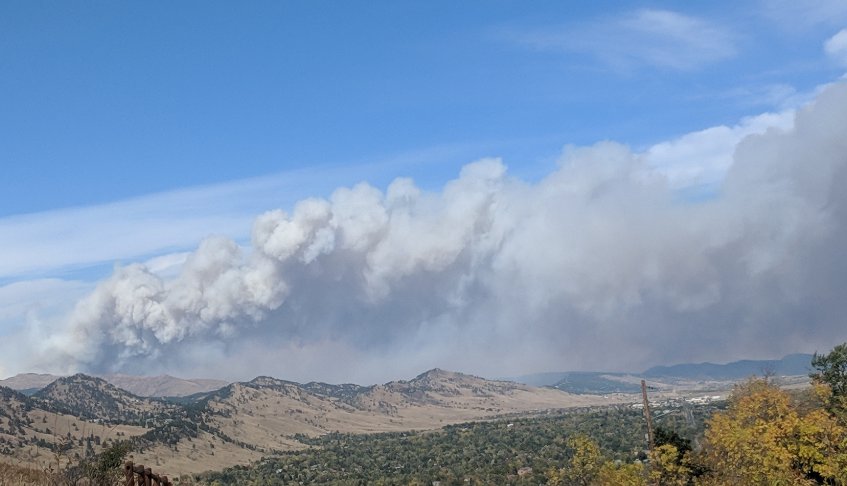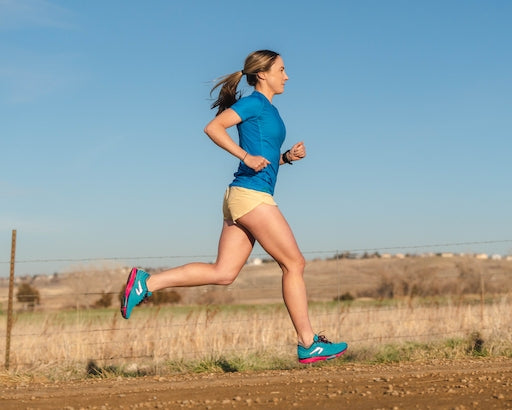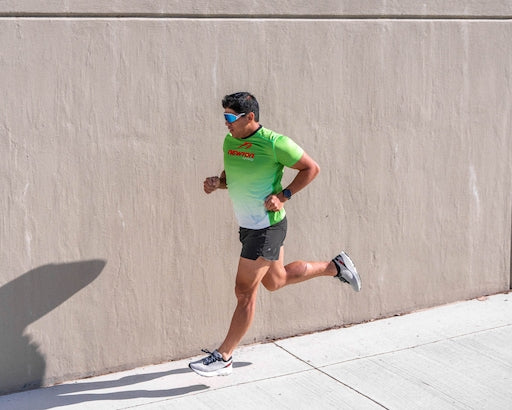
Minimizing Risk When Air Quality Is Poor
20 October 2020
By – Josh Emdur D.O. – Chief Medical Officer – SteadyMD
The 2020 American West wildfire season has been one for the record books with over 6.6 million acres of scorched earth across California, Oregon, Washington, and Colorado. All this fire has resulted in some smoky days. As a family medicine physician I have witnessed the effects of poor air quality on my patients this summer and would like to spend a few minutes explaining why air quality is something that runners should consider before heading out on those campfire smelling days.
What is Air pollution and how is it measured?
The Environmental Protection Agency (EPA) breaks air pollution into five main categories. Ground-level ozone, particulate pollution, carbon monoxide, sulfur dioxide, and nitrogen dioxide. Smoke from wildfires releases all of the aforementioned pollutants into the air and are measured by the AQI (air quality index)
What is considered unhealthy air quality, and when would you advise not going outdoors to exercise?

I recommend that my patients start thinking about air quality once the AQI is greater than 50. Many people are fine exercising outside when the AQI is greater than 100, but we all have different levels of lung sensitivity.
The website AirNow is a great resource to find the current AQI in your area. As a rule of thumb, consider dialing back your outdoor exercise if you smell smoke in the air or if you notice a significant change in the amount of visible haze in the sky.
Health effects of poor air quality and why does this matter to runners?
The past few months have been tough for many of my patients who suffer from asthma or chronic lung disease. Poor air quality is a major irritant to the airways and can trigger asthma attacks, chronic cough, sore throat, allergy symptoms, and generalized fatigue.
When we run our respiratory rate goes from 12 breaths per minute up to 50 breaths per minute. The increased respiratory rate along with switching from nasal breathing to mouth breathing significantly increases your body’s exposure to pollutants. There have been numerous studies linking air pollution with increased mortality.
The goal of every workout should be to feel better after the session than before you started. If you notice a scratchy throat or cough following a workout you should consider not repeating intense sustained exertion until the air quality improves. Many people fail to associate their upper respiratory symptoms with exercise during periods of poor air quality.
Your lungs are like balloons and with time, smoke and particulate matter cause your lungs to lose elasticity which in turn make it harder to breath. Ultimately air pollution causes similar effects to smoking cigarettes. One study suggests that a bad air quality day in Beijing, China is equivalent to smoking 1.5 cigarettes per hour.
What can you do to minimize the risk when air quality is poor?
- Monitor the air quality and modify/reschedule workouts depending on conditions
- AQI under 50- anything goes
- 50-100 easy up to 2 hours
- 100-150 really easy, less than 1 hour
- 150+ day off
- Exercise early in the morning or later in the day when ozone levels are lower.
- Stick to exercising indoors in an air conditioned environment when air quality is bad.
- Consider purchasing a hepa filter for your home if you or a family member has asthma or sensitive airways
- Avoid areas with higher levels of pollution such as valleys, industrial areas, or busy roads
- Talk to your doctor if you develop symptoms of airway irritation such as cough, throat irritation, shortness of breath, wheezing, and chest tightness

